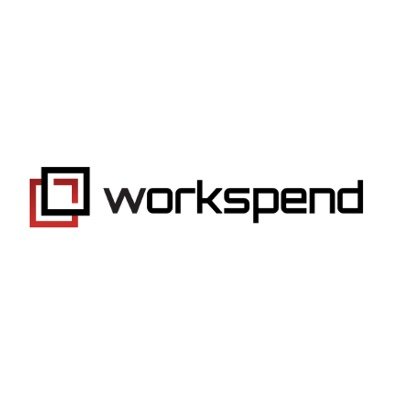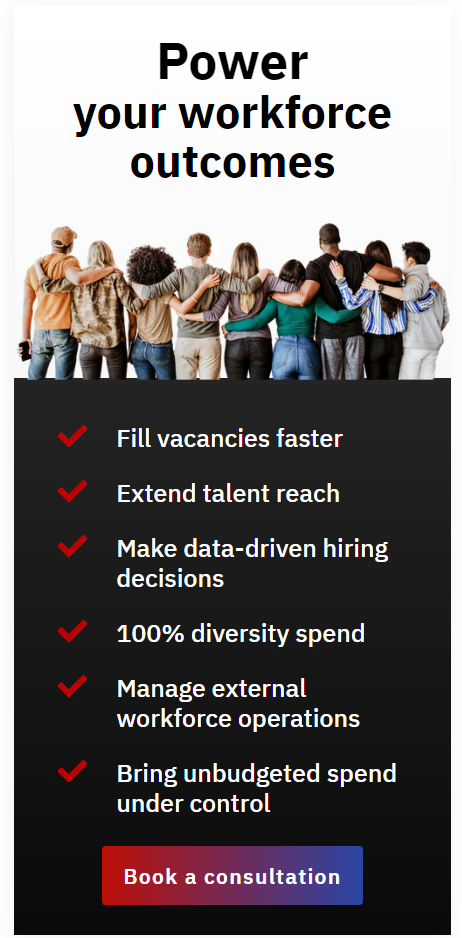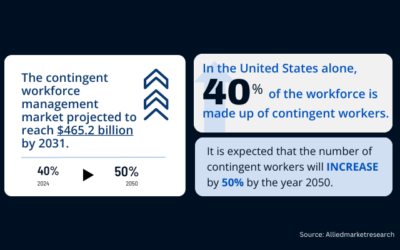
Chloe Mumford - 7 min read
How 2023 became a game-changing year for workforce inclusivity
DE&I has become a buzzword in today’s corporate culture. Yet, up to now, organizations have continued to resist real change and considered diversity & inclusion as a checkbox to be ticked. Many organizations acknowledge that DE&I initiatives have proven essential to organizational success but have yet to demonstrate any true commitment.
Yet, this year, we have witnessed a piquing interest in neurodiversity and DE&I initiatives. So, what has happened to make 2023 the year for workforce inclusivity?
Why attitudes around DE&I are changing
This is not a simple question with a single answer. In fact, there are multiple drivers causing organizations to change their stance on workforce inclusivity, DE&I and push past the check box.
DE&I is important to talent
Pre-pandemic, while workers did care about DE&I initiatives, they were more passive in their attitudes and had very little power in their own employment decisions. Following the pandemic and the shift in power from employers to workers, 40% more workers said that the events of the past year have made diversity and inclusion more of a priority at their companies. They’re making a proactive effort to discuss DE&I initiatives with their higher-ups.
We are seeing a trend of workers holding employers accountable for their workforce inclusivity and well-being. According to a survey by QuestionPro Workforce and EQ Community, asking 1000 full-time employees across various industries, nearly 40 per cent expressed a willingness to change companies if they find a more inclusive culture elsewhere. Additionally, organizations have now realized that if they want to attract and retain talent, they have to be proactive with their DE&I initiatives, measure their performance and communicate their success.
Increased pressure of social change
In the past couple of years, various movements have made a significant impact on society’s views and perceptions of DE&I. For example, Black Lives Matter spurred questions about the unfair treatment of diverse groups in society, extending to the bias they face in the workplace.
As a result of movements like these and ‘cancel culture’ damaging brand reputations, organizations wish to be seen doing the right thing. Many began to implement training and diversity policies to help prevent bias and discrimination in their workplace. Now, organizations are feeling the pressure of societal change and the rise of hiring remote workers from all over the globe, making talent pools more diverse than ever. Bringing about inclusivity has become an unwavering challenge, but many companies are still lacking guidance on how to implement changes.

Shareholder attitudes to DE&I
Some of the people who care the most about the public perception of a company are its shareholders. It has a direct impact on the company’s reputation, brand image, and ultimately, its financial performance. They are increasingly holding businesses accountable for progressing their DE&I initiatives, and are now demanding solid evidence of the changes being implemented.
Nike Inc is one such example, where shareholder pressure resulted in the company having to reveal data on recruitment and promotion rates of under-represented groups by the end of 2024. Another conglomerate, the Coca-Cola Company, has also updated its procurement policies to state that all suppliers must provide evidence of DE&I policy implementation.
As societal pressure mounts, it is likely that companies will only be judged harsher for lagging behind the social curve. Shareholders’ satisfaction hinges on safeguarding the company’s reputation, which is key to attracting more customers and investors, leading to better financial performance, higher shareholder value and optimism in future growth. Prioritizing a good public image ensures the company’s success aligns with shareholders’ interests, keeping them satisfied.
Increasing areas of diversity
The landscape of DE&I policies is in a constant state of evolution, reflecting the changing social, cultural, and legal contexts in which organizations operate. Over the years, there has been a growing recognition of the importance of creating diverse and inclusive workplaces, leading to the adoption of more comprehensive policies. The concept of workplace diversity has broadened to include areas such as neurodiversity and socio-economic status. To remain relevant and effective, organizations must continually update and refine their diversity policies to address emerging challenges and ensure that all employees feel valued. By staying responsive to the evolving landscape of DE&I, organizations can foster a culture of belonging and equity that enhances employee well-being, brand image and drives long-term success.
Final thoughts
So far, 2023 has been a game-changing year for broadening perspectives on workforce inclusivity. It’s important to both workers and shareholders, and organizations need to keep up and adapt.
Yet, in recent news, DE&I leaders are leaving their positions in droves. Why is this? It could be for any number of reasons, but overall, this might suggest that organizational priorities are shifting. Perhaps they feel unsupported and lacking in power to enact real change. Clearly, even some of the world’s largest organizations are struggling to move past the basic requirements for DE&I and empower their diversity executives to influence behavioural and cultural change despite social pressures.
Perhaps the scope of change required is overwhelming. Perhaps it’s difficult for companies to weigh the benefits of cultural change versus keeping things the way they are. Nevertheless, the more resistive and rigid organizations are when it comes to fostering workplace inclusion, the more challenging it will be to attract, hire and retain talent, while keeping customers and shareholders happy.
You may also like:
Streamlining Contingent Worker Onboarding: Accelerating Time-to-Productivity
Streamlining Contingent Worker Onboarding: Accelerating Time-to-ProductivityOrganizations are turning to contingent workers to bridge talent gaps and adapt to fluctuating demands. However, the traditional onboarding processes, often designed for permanent hires, are...
AI Should Augment Human Intelligence, Not Replace It
Will smart machines replace human workers? How human intelligence can work with artificial intelligence to produce augmented intelligence.
Reducing Contingent Labor Costs: Strategies for Maximizing Efficiency
Discover how Workspend can help you reduce contingent labor costs and boost efficiency. Gain insights, implement strategic sourcing, optimize workforce planning, and ensure compliance. Partner with us for streamlined solutions. Contact us today!
Power your workforce outcomes with a diversity MSP






